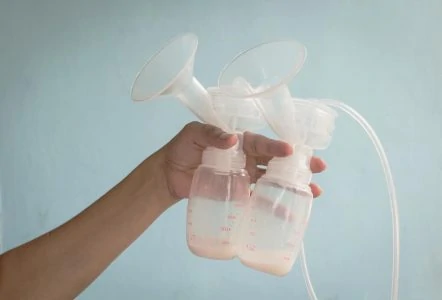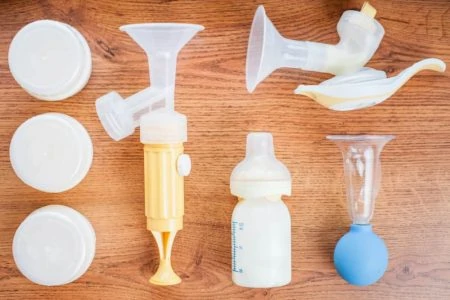Or perhaps you are adopting and dream of breastfeeding your new baby. The good news extends to women who have never been pregnant. With the right support and preparation, induced lactation is entirely possible.
Our medical team is here to walk you through the nitty-gritty details of relactation and induced lactation. We will cover how it works, realistic timelines, and the specific steps you can take to encourage your body to produce liquid gold.
Key Takeaways
- Relactation vs. Induced Lactation: Relactation rebuilds a supply after a break, while induced lactation helps non-pregnant or adoptive parents produce milk.
- Stimulation is Key: Frequent pumping, nursing, and skin-to-skin contact are the primary drivers for signaling your body to make milk.
- Nutritional Value: Milk from induced lactation contains the same antibodies and nutrients as standard breast milk, though it lacks colostrum.
- Patience Required: Success takes time and varies by individual; it often requires weeks of dedication to see significant flow.
What Is Relactation?
In simple terms, relactation is the process of rebuilding a breast milk supply that has dried up or reduced significantly after a period of not breastfeeding (1). This gap could be anywhere from a few weeks to several years.
Relactation relies on two main goals: stimulating the breasts to bring back the milk supply and teaching the baby to latch and nurse again.
What About Induced Lactation?
Induced lactation, sometimes called adoptive breastfeeding, works similarly to relactation. However, it involves building a milk supply in a person who has not been pregnant recently or at all.
This is a beautiful option for adoptive parents who want to nourish their babies naturally. If you have enough time before the baby arrives, you can undergo hormone therapy. This mimics pregnancy by stimulating estrogen and progesterone production.
essentially, you are tricking your body into believing it is pregnant so it prepares for lactation (2).
To kickstart this process, you usually need to begin pumping at least two months before you plan to breastfeed. Working with a lactation consultant is highly recommended to create a custom protocol.
What Is the Milk Composition From Induced Lactation?
Breast milk is breast milk. Whether it comes from a recent birth, relactation, or induced lactation, it is nutritionally complete. It contains the essential fats, proteins, and antibodies your baby needs.
The only major difference is that milk from induced lactation does not contain colostrum. Colostrum is the thick, yellowish “first milk” produced in the first few days after giving birth.
While colostrum is beneficial, the mature milk you produce through induced lactation is still superior to formula in terms of immunological benefits.
Does the Baby’s Age Matter?
Generally, the younger the baby, the easier it is to reintroduce the breast. Newborns and babies under 3 months old still have a strong, instinctive rooting reflex. They are usually more willing to latch the moment they are placed skin-to-skin (3).
Babies older than 6 months might be more hesitant. They are often accustomed to the fast flow of bottle feeding and solid foods. However, do not let this discourage you.
Research shows that even toddlers between 1 and 2 years old have successfully returned to breastfeeding after their mothers relactated (4). Patience and persistence are your best tools here.
How Long Will It Take for My Milk To Flow?
There is no single answer to this. Some bodies respond within days, while others take weeks. Experts suggest you should commit to the process for at least one month to see real results. It is a marathon, not a sprint.
How To Start Relactation
Re-establishing that nursing bond requires dedication. Here is a step-by-step guide to help you succeed.
1. Consult Your Pediatrician
Before you start, book an appointment with your child’s doctor. They need to assess the baby’s weight and health to ensure it is safe to adjust their feeding routine.
You must also discuss any medications you are taking. Some prescription drugs and herbal supplements can pass into breast milk and may not be safe for the baby (5).
Be honest about everything you take so your doctor can give you the green light.
Thinking about having a board-certified lactation consultant (IBCLC) on board? An IBCLC can be an essential part of your team. Many doctors have never heard of relactation or induced lactation, while an IBCLC has the training necessary to help with this situation.
Editor's Note:
Michelle Roth, BA, IBCLCA lactation consultant is also invaluable here. They are particularly helpful for moms who previously struggled with low milk supply. They can help you troubleshoot past issues so you don’t face the same roadblocks this time.
2. Initiate Skin-to-Skin Contact
Skin-to-skin contact is magic for milk production. Strip your baby down to their diaper and place them against your bare chest.
This closeness boosts oxytocin, the “love hormone” responsible for milk flow. It also triggers your baby’s feeding instincts, making them more likely to root and latch. Aim for as much skin-to-skin time as possible (6).
3. Avoid Pressure
Stress is the enemy of let-down. If you pressure yourself or force the baby to the breast, you both end up frustrated.
Go into this with a relaxed mindset. It might take weeks to see drops of milk. In the meantime, continue to supplement with formula or donor milk to ensure your baby stays fed and happy.
4. Pump, Pump, and Pump Some More
Milk production works on supply and demand. You must empty the breast frequently to signal your body to make more.
Aim to pump for 20 to 30 minutes every two to three hours. This includes at least two sessions during the night when prolactin levels are naturally higher. You want to hit eight to 12 stimulation sessions every 24 hours.
Manual vs. Electric Pumps
If you are relactating, you need a high-quality double electric pump. While manual pumps are great for occasional use, they are labor-intensive for the volume of pumping required here.
Double electric pumps stimulate both breasts simultaneously, which increases prolactin levels more effectively than single pumping (7).
If you don’t have a pump, hand expression is a valid alternative. For some moms, the skin-to-skin sensation of hand expression actually moves milk better than a machine (8).
5. Consider Galactagogues
A galactagogue is a substance, food, herb, or medication, that increases breast milk production.
Common herbal options include fenugreek, blessed thistle, and goats rue. Prescription options like Domperidone or Reglan are also used in induced lactation protocols (9).
Never start an herbal regimen without checking with your doctor, as some herbs interact with other conditions.
Breast stimulation is still important when using a galactagogue. You will need to continue frequent milk removal while taking the herbs or medications. Milk supply is based on milk removal.
Editor's Note:
Michelle Roth, BA, IBCLC6. Eat Lactogenic Foods
Your diet fuels your supply. Focus on foods known to support lactation, such as oats, brewer’s yeast, flaxseeds, and dark leafy greens like spinach. Make sure you are eating enough calories to support the energy required to make milk.
7. Drink Plenty of Water
You cannot make fluid if you aren’t drinking fluids. Hydration is critical.
Aim for about 12 glasses of water a day (10). Keep a water bottle near your pumping station so you remember to sip while you stimulate.
8. Pre-Feed Your Baby
A starving baby has no patience. If you try to bring a very hungry baby to a breast with low flow, they will scream.
Give your baby a small amount of formula or expressed milk (about an ounce) before bringing them to the breast. This takes the edge off their hunger, making them calmer and more willing to practice latching.
9. Use a Lactation Aid (SNS)
A Supplemental Nursing System (SNS) is a game-changer for relactation. This device consists of a container of milk worn around your neck with a thin tube taped to your nipple.
When the baby latches, they get the tube and your nipple at the same time. They receive immediate reward (milk from the container) while their sucking stimulates your breast to produce its own milk. This avoids “nipple confusion” and keeps the baby at the breast rather than the bottle.
Here is a video on how to use an SNS correctly.
10. Monitor Weight Closely
This is the most critical safety step. As you transition to breastfeeding, you must ensure your baby isn’t losing weight.
Work with your pediatrician to do weekly weight checks. Do not stop supplementing until you have confirmed that your specific milk output matches your baby’s caloric needs.
11. Mind the Bottle Flow
Babies love bottles because they are easy. To compete with the bottle, you need to make the bottle less appealing.
Use slow-flow nipples (often labeled size 0 or newborn). Practice “paced feeding” to mimic the start-and-stop rhythm of breastfeeding.
If your baby struggles to latch on your skin, a nipple shield can act as a bridge. It offers the firm sensation of a bottle nipple but keeps the baby on your breast.
12. Get Your Partner on Board
Relactation is time-consuming. You will need help with washing pump parts, bottle feeding supplements, and household chores. Explain the process to your partner so they can support you emotionally and physically.
13. Join a Support Group
The process can feel lonely, but you aren’t alone. Organizations like La Leche League often have leaders experienced in relactation. Joining an online or local group connects you with other moms who have successfully brought their milk back. Their tips and encouragement can keep you going on hard days.
What Changes Will My Body Undergo?
As your hormones shift and milk production restarts, you might notice:
- Fullness: Breasts may feel heavier, tender, or tingly.
- Leaking: You may notice drops of milk during the day or at night.
- Skin Changes: Areolas may darken.
- Mood Shifts: Hormonal fluctuations can make you feel emotional or teary.
Will I Achieve a Full Supply?
It is difficult to predict. Success depends on the baby’s age, how often you pump, and your individual biology.
Some women achieve a full supply and can stop supplementing entirely. Others produce a partial supply and continue to combo-feed. Both outcomes are victories. Every drop of breast milk provides antibodies and comfort to your child.
Does Relactation Really Work?
Yes. The World Health Organization and countless lactation studies confirm that relactation is effective. If you have the time, the support, and the perseverance, your body can almost certainly produce milk again.
Relactation FAQs
In Conclusion
Relactation is a journey of love and persistence. Whether you want to provide full meals or simply reconnect with your baby through nursing, your efforts matter.Remember to be kind to yourself. Surround yourself with support, drink your water, and trust your body. Every drop you produce is a gift to your little one.












